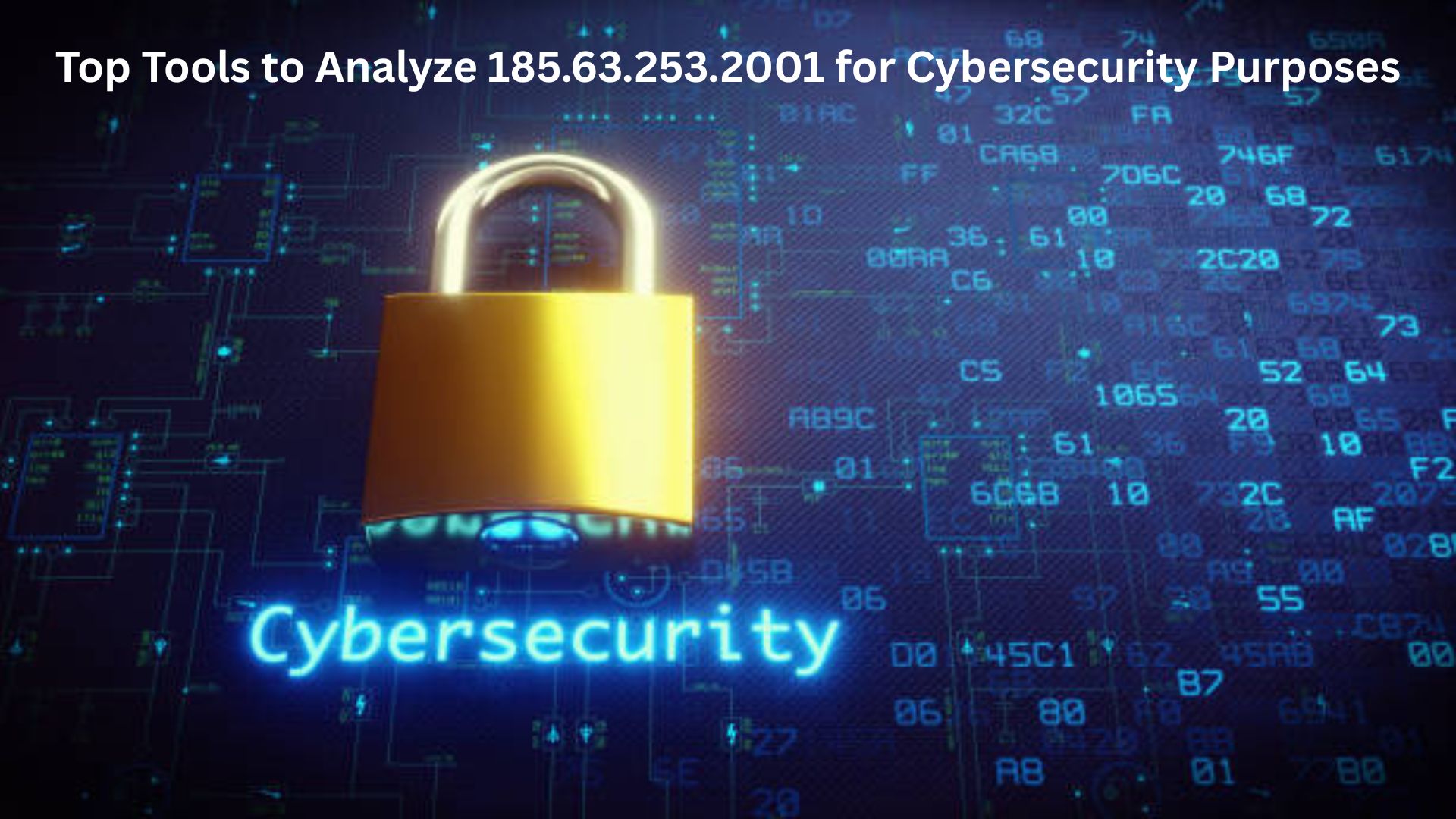Top Tools to Analyze 185.63.253.2001 for Cybersecurity Purposes
In the modern digital environment, safeguarding your network has become a necessity. One crucial step in this process is examining IP addresses. Suspicious or unknown IPs, such as 185.63.253.2001, can be linked to threats ranging from unauthorized access attempts to cyber attacks. This guide highlights the most effective tools to analyze 185.63.253.2001 for cybersecurity purposes, helping you maintain a secure digital environment.
The Importance of Analyzing IP Addresses
Every device connected to the internet is assigned an IP address, serving as its unique identifier. While many IPs are harmless, some may be involved in malicious activities, including spam, malware distribution, or intrusion attempts.
Analyzing IP addresses like 185.63.253.2001 enables security teams to spot threats early, prevent unauthorized access, and protect critical data. Regular monitoring and evaluation of IP activity are essential for maintaining network security and avoiding costly breaches.
Essential Tools to Analyze 185.63.253.2001
Effectively examining an IP requires a combination of geolocation tools, threat intelligence platforms, network analyzers, and security suites. Below is a breakdown of the top solutions.
1. IP Geolocation Tools
Geolocation tools reveal the physical location and associated organization of an IP. This information is crucial for identifying suspicious access patterns, especially if the IP is located in an unexpected region.
- MaxMind: Offers comprehensive data on the country, city, and ISP of an IP, helping identify high-risk locations.
- IPinfo: Provides detailed insights, including organization type, connection type, and potential threat rating, allowing quick assessment of IP behavior.
Using these tools, you can recognize unusual access attempts and detect patterns that may signal a cybersecurity threat.
2. Threat Intelligence Platforms
Threat intelligence platforms collect and analyze global data to detect malicious IPs. They are particularly useful for assessing whether an IP has a history of cyber threats.
- VirusTotal: Checks IPs against an extensive database of known threats, showing reports on malware activity, spam, and previous malicious actions.
- AbuseIPDB: A community-driven resource that tracks reports of abusive IP behavior. Checking 185.63.253.2001 here can indicate whether others have flagged it for suspicious activities.
Leveraging threat intelligence platforms ensures your security decisions are based on accurate, real-time information.
3. Network Monitoring Tools
Network monitoring solutions help track live activity from specific IPs, allowing you to identify unusual traffic, repeated login attempts, or suspicious data transfers.
- Wireshark: A powerful packet analysis tool that inspects network data in detail, helping uncover any abnormal activity originating from 185.63.253.2001.
- PRTG Network Monitor: Monitors network bandwidth, connectivity, and source traffic. Alerts can be set for specific IPs, enabling quick response to irregular behaviors.
These tools give cybersecurity teams the visibility needed to react promptly to threats.
4. Firewall and Security Suites
Firewalls and integrated security solutions provide the first line of defense against harmful IP activity. They often include automated threat detection and IP blocking features.
- Cisco Umbrella: Blocks known malicious IPs at the DNS layer, preventing connections from harmful sources.
- Fortinet Security Suite: Offers comprehensive firewall protections combined with threat intelligence, allowing the system to flag or block high-risk IPs like 185.63.253.2001.
Integrating firewalls with monitoring tools ensures that potential threats are both detected and mitigated effectively.
Safe Practices for Analyzing 185.63.253.2001
Handling suspicious IPs safely is critical to avoid unintended exposure. Here are best practices:
- Use a sandboxed environment: Analyze IP activity in a controlled setting to prevent risk to your primary network.
- Cross-check data: Combine geolocation, threat intelligence, and network monitoring results for a complete picture.
- Keep detailed records: Maintain logs of IP activity for future reference and audit purposes.
- Take preventive action: Block or restrict access from high-risk IPs and set alerts for repeated suspicious behavior.
Following these measures ensures that analyzing 185.63.253.2001 for cybersecurity purposes is both safe and effective.
Common Warning Signs
While investigating an IP, watch for red flags indicating potential threats:
- Multiple failed login attempts or authentication errors.
- Abnormal traffic volumes or unusual access patterns.
- Connections from unexpected geographic locations.
- IPs flagged in multiple threat intelligence sources.
Early detection of these warning signs allows security teams to mitigate risks before they escalate.
Conclusion
Examining IP addresses like 185.63.253.2001 is an essential practice in cybersecurity. By using a combination of geolocation tools, threat intelligence platforms, network analyzers, and security suites, organizations can detect potential threats, secure their networks, and respond swiftly to suspicious activity.
Regular IP analysis not only protects sensitive data but also strengthens overall network security. Implementing the tools and practices outlined above ensures that your systems are well-prepared to handle threats from potentially malicious IPs like 185.63.253.2001.




Post Comment